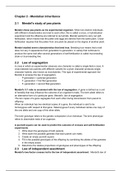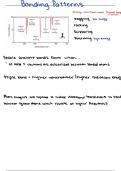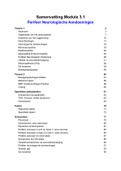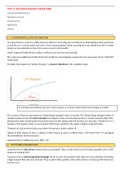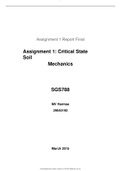Chapter 2 - Mendelian Inheritance
2.1 Mendel's study of pea plants
Mendel chose pea plants as his experimental organism. When two distinct individuals
with different characteristics are bred to each other, this is called a cross, or hybridization
experiment and the offspring are referred to as hybrids. Mendel wanted to carry out self-
fertilization, which means that the pollen and eggs are derived from the same plant. Cross-
fertilization requires that the pollen from one plant be placed on the stigma of another plant.
Mendel studied seven characteristics that bred true. Breeding true means that a trait
does not vary in appearance from generation to generation. A variety that continues to
produce the same trait after several generations of self-fertilization is called true-breeding
strain or true-breeding line.
2.2 Law of segregation
A cross in which an experimenter observes one character is called a single-factor cross. A
cross between two parents with different variants for a given character produces single-
character hybrids, also known as monohybrids. This type of experimental approach led
Mendel to propose the law of segregation.
- P generation = parental generation
- F1 generation = first filial generation
- F2 generation = second filial generation
Mendel's 3:1 ratio is consistent with the law of segregation. A gene is defined as a unit
of heredity that may influence the outcome of an organism's traits. The term allele refers to
an alternative form of a particular gene. Mendel's law of segregation:
The two copies of a gene segregate from each other during transmission from parent to
offspring.
When an individual has two identical copies of a gene, the individual is said to be
homozygous with respect to that gene. Heterozygous if every individual carries one copy of
the one allele and one copy of the other allele.
The term genotype refers to the genetic composition of an individual. The term phenotype
refers to observable traits of an organism.
A punnett square can be used to predict the outcome of crosses and self-fertilization
experiments.
1. Write down the genotypes of both parents.
2. Write down the possible gametes that each parent can make.
3. Create an empty punnett square
4. Fill in the possible genotypes of the offspring by combining the alleles of the gametes
in the empty boxes.
5. Determine the relative proportions of genotypes and phenotypes of the offspring.
2.3 Law of independent assortment
Mendel's two-factor crosses led to the law of independent assortment. Mendel's law of
2.1 Mendel's study of pea plants
Mendel chose pea plants as his experimental organism. When two distinct individuals
with different characteristics are bred to each other, this is called a cross, or hybridization
experiment and the offspring are referred to as hybrids. Mendel wanted to carry out self-
fertilization, which means that the pollen and eggs are derived from the same plant. Cross-
fertilization requires that the pollen from one plant be placed on the stigma of another plant.
Mendel studied seven characteristics that bred true. Breeding true means that a trait
does not vary in appearance from generation to generation. A variety that continues to
produce the same trait after several generations of self-fertilization is called true-breeding
strain or true-breeding line.
2.2 Law of segregation
A cross in which an experimenter observes one character is called a single-factor cross. A
cross between two parents with different variants for a given character produces single-
character hybrids, also known as monohybrids. This type of experimental approach led
Mendel to propose the law of segregation.
- P generation = parental generation
- F1 generation = first filial generation
- F2 generation = second filial generation
Mendel's 3:1 ratio is consistent with the law of segregation. A gene is defined as a unit
of heredity that may influence the outcome of an organism's traits. The term allele refers to
an alternative form of a particular gene. Mendel's law of segregation:
The two copies of a gene segregate from each other during transmission from parent to
offspring.
When an individual has two identical copies of a gene, the individual is said to be
homozygous with respect to that gene. Heterozygous if every individual carries one copy of
the one allele and one copy of the other allele.
The term genotype refers to the genetic composition of an individual. The term phenotype
refers to observable traits of an organism.
A punnett square can be used to predict the outcome of crosses and self-fertilization
experiments.
1. Write down the genotypes of both parents.
2. Write down the possible gametes that each parent can make.
3. Create an empty punnett square
4. Fill in the possible genotypes of the offspring by combining the alleles of the gametes
in the empty boxes.
5. Determine the relative proportions of genotypes and phenotypes of the offspring.
2.3 Law of independent assortment
Mendel's two-factor crosses led to the law of independent assortment. Mendel's law of


